E-Commerce Retention Rates Explained and How to Boost Them in 2025
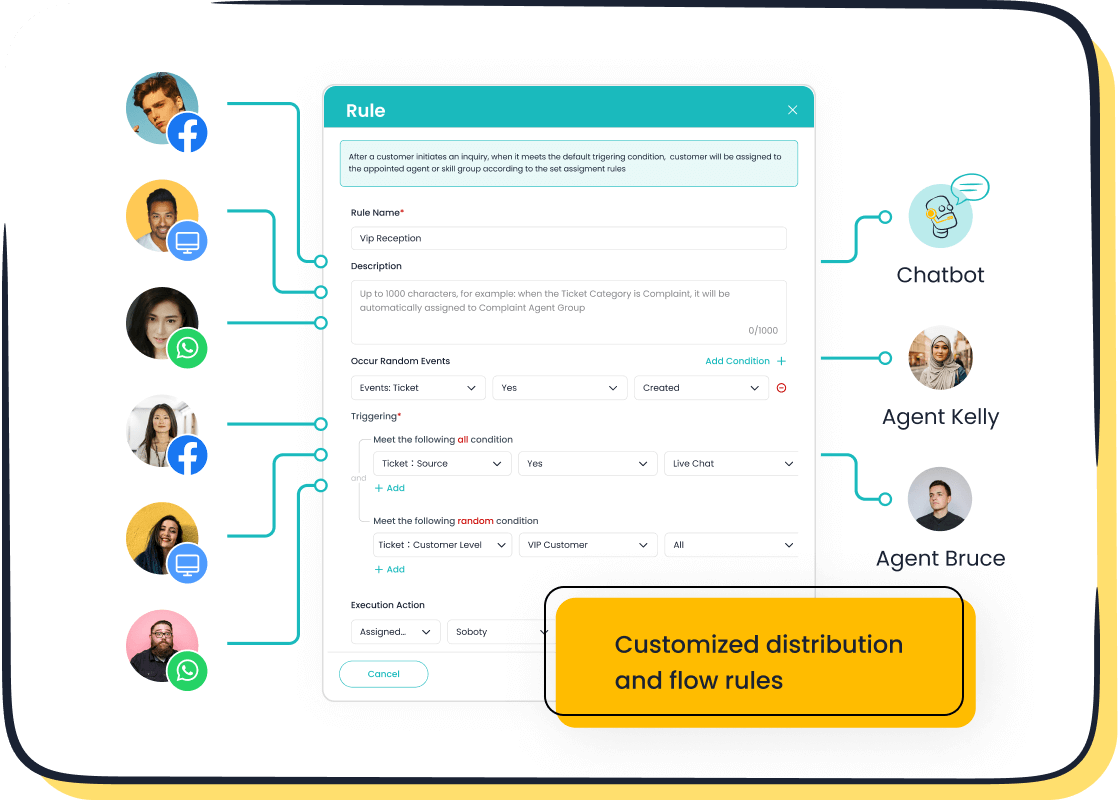
In e-commerce, customer retention in e-commerce is all about keeping your customers coming back for more. It’s not just a nice-to-have—it’s a must-have in 2025. Why? Because acquiring new customers has become incredibly expensive. Over the past decade, customer acquisition costs (CAC) have surged by a staggering 222%, now reaching $29 per customer. Retaining your existing customers can save you from these skyrocketing costs while boosting your profits.
Repeat customers are also the lifeblood of many industries. For example, consumables like meal deliveries enjoy a repeat purchase rate of 29%, while high-performance sports brands see 33%. These numbers show that building customer loyalty directly impacts your bottom line. Tools like Sobot help businesses foster these relationships by creating seamless and personalized experiences, ensuring customers stick around.
By focusing on retention, you’re not just saving money—you’re building lasting relationships that drive growth.
Understanding E-Commerce Retention Rates
What Is an Ecommerce Retention Rate?
An ecommerce retention rate measures how well your business keeps customers coming back over a specific period. It’s calculated as the percentage of customers who continue purchasing from you after their initial transaction. Think of it as a health check for your customer relationships. A high retention rate means your customers love what you offer and trust your brand enough to return.
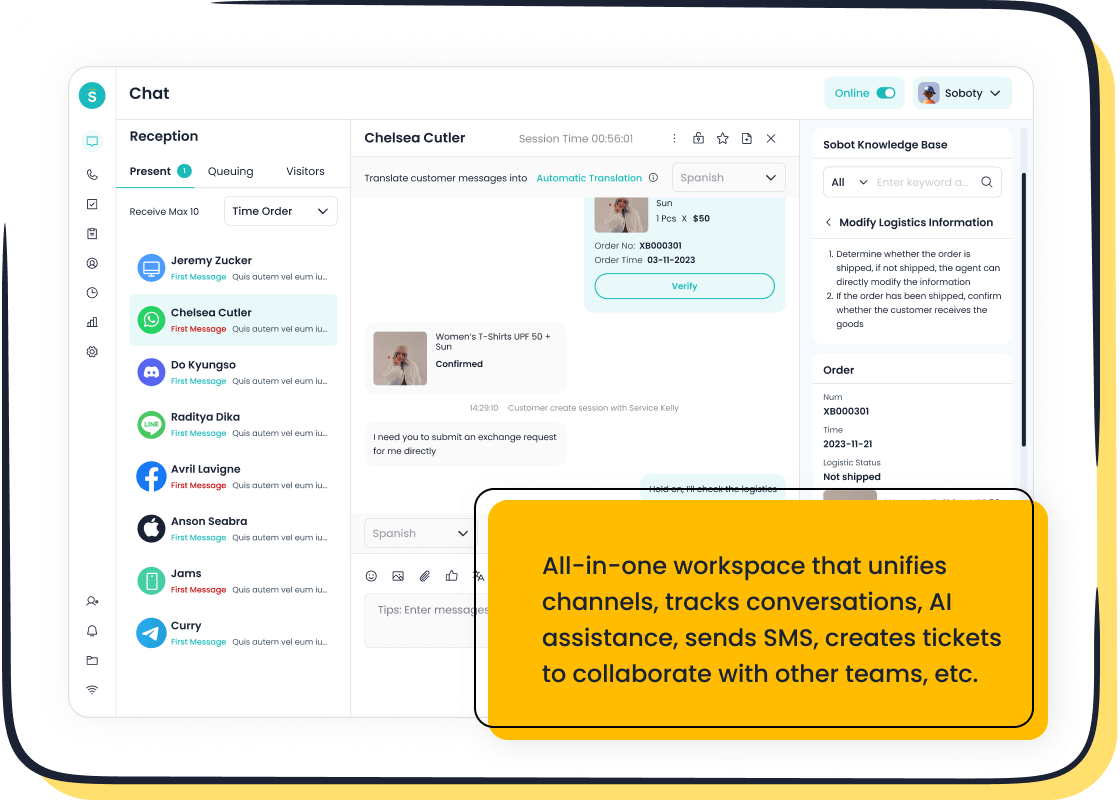
Retention isn’t just about keeping customers—it’s about building loyalty. Metrics like repeat purchase rate and customer lifetime value (CLV) help you understand how much value each customer brings over time. For example, if your CLV is growing, it’s a sign that your retention strategies are working. Tools like Sobot Live Chat can play a big role here by creating personalized experiences that make customers feel valued, encouraging them to stick around.
Why Customer Retention in E-Commerce Matters in 2025
Customer retention in e-commerce is more important than ever. Rising acquisition costs make it harder to attract new customers, and competition in digital markets is fierce. Retaining existing customers is not only cost-effective but also a smart way to boost profitability. Studies show that companies responding to customer feedback enjoy a 25% to 30% higher retention rate. When customers see their opinions lead to real changes, they feel valued—and that builds loyalty.
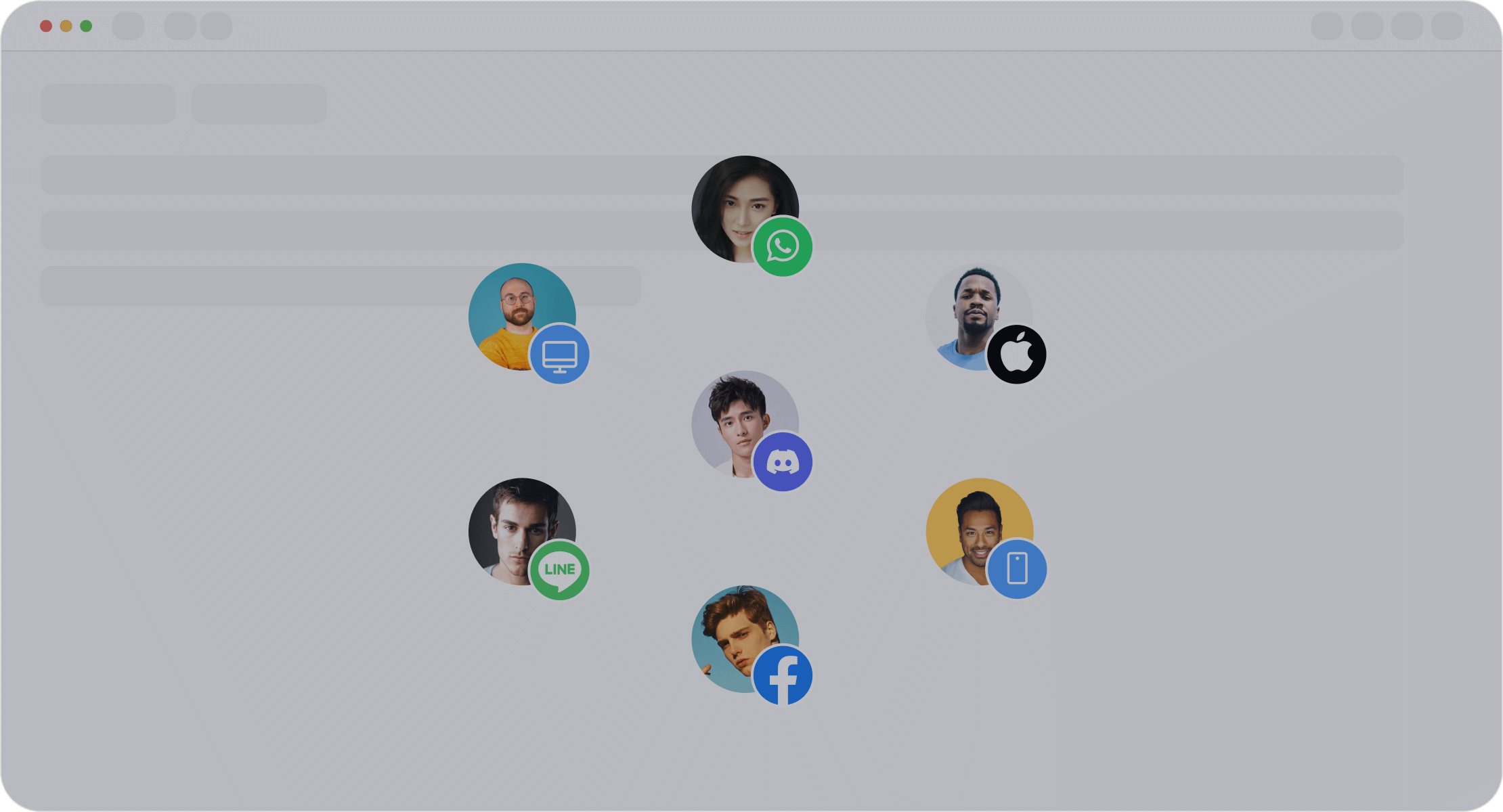
Retention also drives repeat purchases and upselling opportunities. For instance, subscription models are gaining traction because they lock in customers for longer periods. By focusing on retention, you can create a steady revenue stream while reducing marketing expenses. Sobot’s marketing solutions help businesses engage customers across multiple channels, offering personalized campaigns that increase loyalty and lifetime value.
| Evidence Type | Description |
|---|---|
| Profitability Impact | Improving retention rates can significantly enhance profitability and reduce marketing costs. |
| Customer Loyalty | Companies focusing on existing customers cultivate long-term relationships, encouraging repeat business. |
| Cost Efficiency | Acquiring new customers is often more expensive than retaining existing ones, highlighting the financial benefits of retention. |
Key Trends Shaping Retention Strategies in 2025
Retention strategies are evolving fast, and 2025 is set to bring exciting trends to the table. Subscription models are becoming a go-to strategy for many businesses, especially in niche markets. These models ensure consistent revenue while fostering long-term customer relationships. Rapid customer research is another trend to watch. With consumer preferences changing quickly, businesses need tools to gather insights faster than ever.
Augmented reality (AR) is also making waves. Imagine letting customers try on clothes virtually or see how furniture fits in their living room—all from the comfort of their home. These immersive experiences not only enhance engagement but also improve retention. Sobot’s omnichannel solutions, including Live Chat, help businesses stay ahead by offering seamless customer interactions across platforms, ensuring no opportunity is missed.
| Trend | Description |
|---|---|
| Subscription Models | Subscription-based revenue models are gaining traction, particularly in niche markets. |
| Rapid Customer Research | The need for quick insights into consumer preferences is becoming essential due to fast-changing trends. |
| Augmented Reality | Incorporating AR can enhance customer engagement and retention by providing immersive shopping experiences. |
How to Calculate Your Customer Retention Rate
The Customer Retention Rate Formula Explained
Calculating your customer retention rate is simpler than you might think. It’s all about understanding how many customers stick with you over a specific period. The formula looks like this:
Customer Retention Rate = ((End Period Customers - New Customers) / Start Period Customers) * 100
This formula helps you measure customer retention rate effectively by focusing on the customers who remain loyal. For example, if you start the year with 1,050 customers, gain 350 new ones, and end with 1,000, your retention rate would be:
((1000 - 350) / 1050) * 100 = 61.9%
This percentage shows how well you’re keeping your customers engaged. Tools like Excel or customer analytics platforms can make these calculations even easier.
Step-by-Step Example of Retention Rate Calculation
Let’s break it down step by step:
- Define your metrics: Start with the number of customers at the beginning of the period.
- Subtract new customers: Remove the new customers acquired during the same period.
- Divide by starting customers: Take the remaining number and divide it by the initial customer count.
- Multiply by 100: Convert the result into a percentage.
Here’s a quick example in table form:
| Description | Value |
|---|---|
| Beginning Customers (Year 1) | 100 |
| New Customers Acquired (Year 1) | 20 |
| Churned Customers (Year 1) | 10 |
| Customers at End of Year 1 | 110 |
| Retention Rate (Year 1) | 90.0% |
This method ensures you calculate ecommerce retention rate accurately, giving you a clear picture of your performance.
Common Pitfalls to Avoid When Calculating Retention
Even with a simple formula, mistakes can happen. Here are some common errors to watch out for:
| Calculation Error | Description | Example |
|---|---|---|
| Ignoring gross margin | Focusing only on revenue without considering profit can mislead decisions. | Spending $200 to acquire a customer who generates $150 in gross profit. |
| Using outdated data | Relying on old metrics can skew your strategy. | Using last year’s purchase data despite market changes. |
Avoid these pitfalls by using up-to-date data and focusing on metrics that truly reflect your business health. Tools like Sobot’s Live Chat can help you track customer interactions and gather real-time insights, ensuring your retention strategies stay on point.
Benchmarks for a Good Retention Rate in E-Commerce
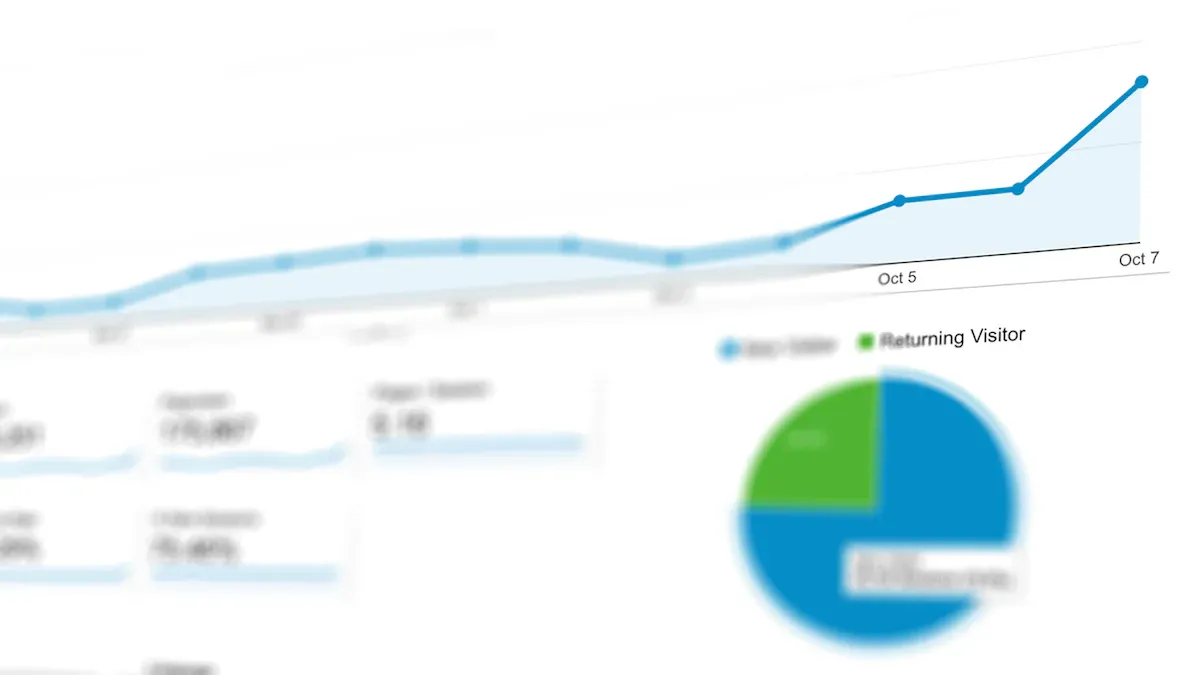
Industry Standards for Ecommerce Retention Rates in 2025
What’s considered a good retention rate for ecommerce? On average, customer retention rates across industries hover around 72.5%. However, this number can vary depending on your niche. For instance, subscription-based businesses often see higher retention rates compared to one-time purchase models. Understanding these benchmarks helps you set realistic goals for your ecommerce retention rate.
Retention isn’t just about numbers—it’s about profitability. A higher customer retention rate means more repeat purchases, which directly impacts your bottom line. Tools like Sobot Live Chat can help you achieve this by creating personalized customer experiences that keep buyers coming back. Whether you’re in retail, gaming, or financial services, focusing on retention is key to staying competitive in 2025.
Factors That Influence Retention Benchmarks
Several factors shape what a good retention rate for ecommerce looks like. Returning visitors, for example, convert at rates 2-3 times higher than new visitors. This makes it crucial to invest in strategies like loyalty programs and personalized email campaigns. These efforts not only boost retention but also enhance customer lifetime value.
Purchase frequency and customer loyalty are also critical. Data from nearly 500 retailers shows that businesses with higher purchase frequency tend to have better retention rates. For example, fashion brands like Primark in the UK focus heavily on customer loyalty to stand out in a crowded market. By analyzing these factors, you can tailor your strategies to meet or exceed industry benchmarks.
How to Compare Your Retention Rate to Industry Averages
Comparing your ecommerce retention rate to industry averages is easier with the right tools. Platforms like SEMrush and SimilarWeb provide insights into traffic sources, audience behavior, and engagement metrics. Here’s a quick look at how these tools can help:
| Tool | Functionality |
|---|---|
| SEMrush | Offers traffic analytics, keyword rankings, and insights into advertising strategies. |
| SimilarWeb | Provides data on traffic sources, audience insights, and engagement metrics. |
To get started, research average conversion rates for your category. Then, compare your performance against competitors while considering factors like price point and customer demographics. This approach gives you a clear picture of where you stand and what you can improve.
Actionable Strategies to Improve Customer Retention Rates
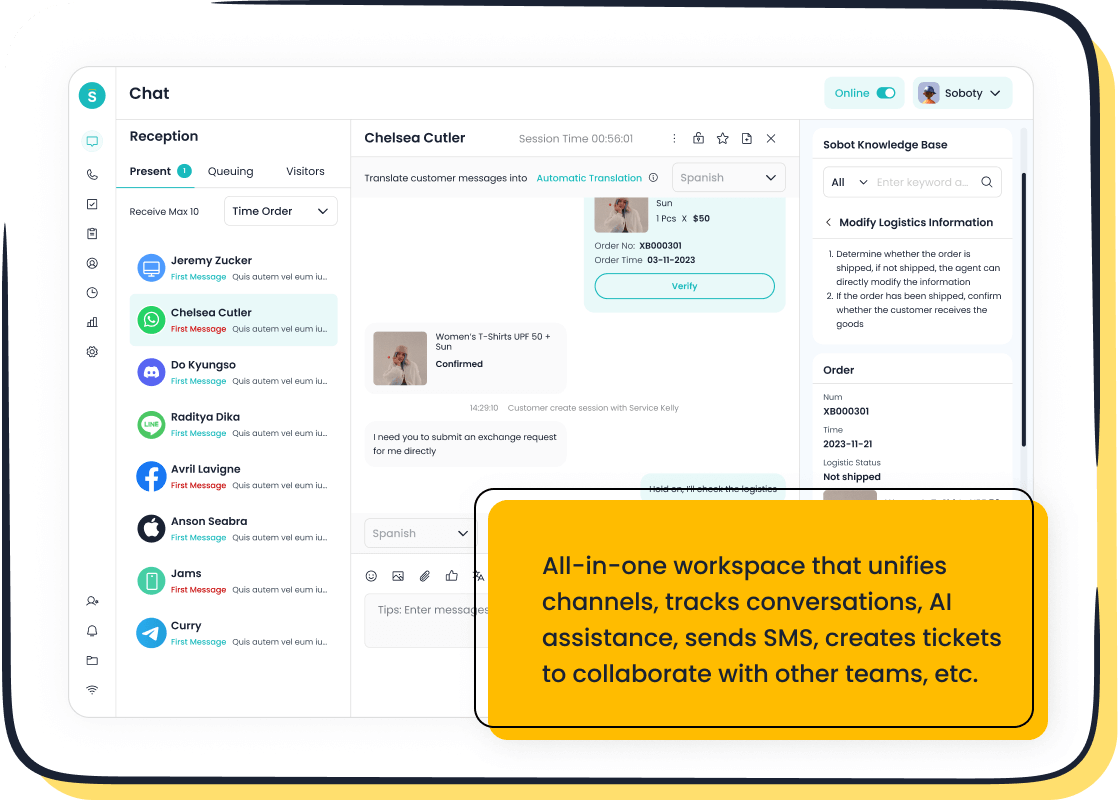
Personalization and Tailored Customer Experiences with Sobot Live Chat
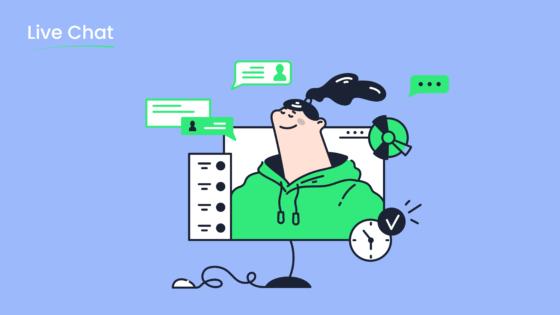
Personalization is no longer optional—it’s essential. Customers expect brands to know their preferences and deliver experiences that feel uniquely tailored to them. This is where tools like Sobot Live Chat shine. By leveraging AI-powered customer segmentation and omnichannel support, you can create personalized customer experiences that make your buyers feel valued.
Imagine this: A customer visits your website and asks about a product. With Sobot Live Chat, your agents can instantly access their purchase history, preferences, and even past interactions. This allows you to recommend products they’re likely to love, boosting the chances of repeat purchases. In fact, businesses using tailored customer experiences report a 38% increase in conversions. That’s not just a number—it’s a game-changer for ecommerce customer retention.
Personalization also extends to proactive engagement. For example, sending a follow-up message after a purchase or offering a discount on their next order can make a lasting impression. Sobot’s built-in analytics evaluate over 150 indicators, helping you refine your retention strategies and keep customers coming back.
Tip: Use Sobot Live Chat’s auto-translation feature to connect with international customers in their preferred language. This small touch can significantly boost customer satisfaction and loyalty.
Building Effective Loyalty Programs
If you want to boost customer retention, launching a loyalty program is one of the most effective strategies. Loyalty programs reward your repeat customers, encouraging them to stick with your brand. But not all programs are created equal. To succeed, yours needs to be engaging, easy to use, and genuinely rewarding.
Take a look at the metrics that demonstrate the power of loyalty programs:
| Metric | Description |
|---|---|
| Customer Lifetime Value (CLV) | Measures the total revenue a business can expect from a customer over the entire duration of their relationship. |
| Repeat Purchase Rate | Highlights the percentage of customers making multiple purchases, showcasing loyalty and satisfaction. |
| Redemption Rate | Indicates the percentage of rewards redeemed, reflecting the attractiveness of the loyalty program. |
For example, a well-designed loyalty program can increase your repeat purchase rate by offering points for every dollar spent. Customers can redeem these points for discounts, exclusive products, or even free shipping. This not only improves customer satisfaction but also strengthens their emotional connection to your brand.
Sobot’s marketing solutions make it easy to launch a loyalty program that works. With tools for multichannel engagement and advanced analytics, you can track customer interactions and fine-tune your program for maximum impact. Whether it’s personalized offers or targeted rewards, Sobot helps you create a program that keeps your customers coming back.
Pro Tip: Use email marketing for loyalty program updates. Send reminders about expiring points or exclusive deals to keep customers engaged and excited.
Enhancing Post-Purchase Communication
The customer journey doesn’t end after a purchase—it’s just the beginning. Post-purchase communication plays a critical role in building trust and ensuring customers return. Studies show that efficient customer service builds credibility, while proper guidance on product usage reduces confusion and return rates.
Here’s how you can enhance post-purchase communication:
- Send a thank-you email immediately after the purchase. This simple gesture shows appreciation and sets a positive tone.
- Provide clear updates on shipping and delivery. Transparency reduces anxiety and builds trust.
- Offer helpful resources, like how-to guides or FAQs, to ensure customers can use your product effectively.
A seamless post-purchase experience leads to higher customer satisfaction and fewer inquiries. For instance, Sobot Live Chat allows you to automate follow-ups, ensuring no customer feels ignored. You can even use satisfaction surveys to gather feedback and identify areas for improvement.
“Trust is the foundation of customer relationships, and consistent, transparent communication is critical to building and maintaining that trust.”
By focusing on post-purchase communication, you’re not just solving problems—you’re creating opportunities for repeat purchases and long-term loyalty.
Leveraging Data Analytics for Retention Insights
Data analytics is your secret weapon for improving retention. By analyzing customer behavior, you can uncover patterns that reveal why customers stay—or leave. This insight helps you create targeted strategies to keep them engaged. For example, tracking metrics like purchase frequency and average order value can show which customers are most likely to return. You can then focus on rewarding their loyalty with exclusive offers or discounts.
Predictive analytics takes this a step further. It uses historical data to forecast future behavior. Imagine knowing which customers are at risk of leaving before they actually do. You could send them a personalized email or offer a special deal to win them back. Tools like Sobot’s built-in analytics make this process seamless. With over 150 indicators, you can identify trends, measure campaign success, and refine your retention strategies in real time.
Data also helps you understand what works—and what doesn’t. For instance, if a specific marketing campaign leads to higher repeat purchases, you can replicate its success. On the flip side, if a strategy underperforms, analytics can pinpoint the issue. This ensures you’re always optimizing your efforts for maximum impact.
Pro Tip: Use segmentation to group customers by behavior, location, or preferences. This allows you to tailor your approach, making your customer experience more relevant and effective.
Improving Customer Support with Sobot’s Omnichannel Solutions
Customer support is the backbone of retention. When customers feel heard and valued, they’re more likely to stick around. Sobot’s omnichannel solutions make this easier than ever. By unifying all communication channels—like email, live chat, and social media—into one platform, you can provide seamless support that meets customers where they are.
Here’s how Sobot’s solutions improve customer support outcomes:
| Benefit | Description |
|---|---|
| Increased Efficiency | Reduces the workload on customer service teams by allowing customers to resolve issues independently. |
| 24/7 Access | Customers can find help and information at any time, enhancing convenience and satisfaction. |
| Cost Savings | Decreases operational costs by minimizing the need for direct customer service interactions. |
| Improved Customer Satisfaction | Provides quick and easy access to information, leading to a better overall experience. |
Imagine a customer reaching out via live chat to ask about their order status. With Sobot’s unified workspace, your agent can instantly access their purchase history, shipping details, and previous interactions. This speeds up resolution times and leaves the customer feeling cared for. Plus, features like AI-powered chatbots handle repetitive queries, freeing your team to focus on complex issues.
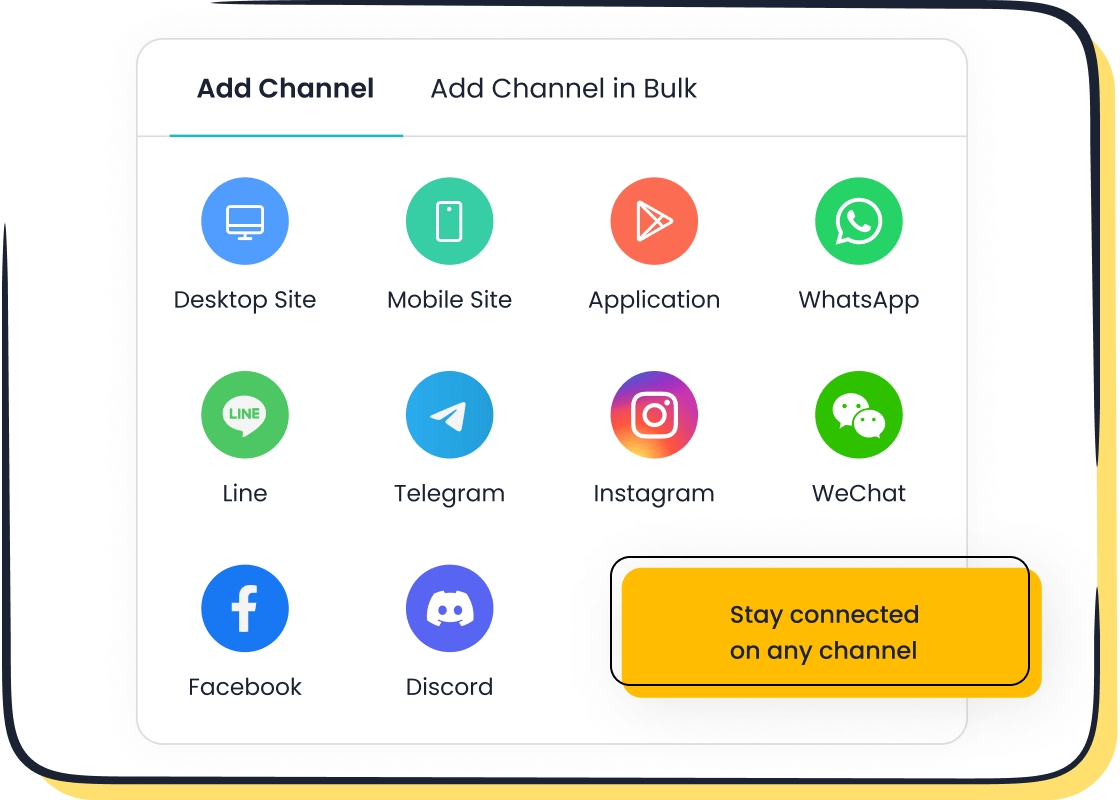
Sobot’s omnichannel solutions also enhance personalization. For example, you can use customer data to recommend products or services they’re likely to love. This not only improves their experience but also increases the chances of repeat purchases. By investing in better support, you’re not just solving problems—you’re building trust and loyalty.
Did You Know? Businesses that prioritize customer support see a 25% increase in retention rates. That’s the power of putting your customers first.
Key Metrics to Track for Retention Success
Tracking the right metrics is essential to understanding how well your retention strategies are working. Let’s dive into three key metrics that can help you evaluate your customer retention success.
Churn Rate and Its Impact on Retention
Your customer churn rate measures the percentage of customers who stop buying from you within a specific period. It’s a direct indicator of how satisfied your customers are and how well your business meets their expectations. A high churn rate often signals dissatisfaction, while a low churn rate reflects strong customer loyalty and satisfaction.
Why does churn matter? Repeat customers make up only 21% of your customer base but contribute 44% of your revenue and 46% of your orders. Losing these valuable customers can hurt your bottom line. By reducing churn, you can increase customer lifetime value and even gain referrals from happy customers. Tools like Sobot Live Chat can help you address customer concerns quickly, reducing churn and improving retention.
Tip: Monitor your churn rate regularly. If it starts climbing, dig into customer feedback to identify and fix the root causes.
Customer Lifetime Value (CLV) as a Retention Metric
Customer lifetime value (CLV) tells you how much profit you can expect from a customer over their entire relationship with your business. It’s a powerful metric for understanding the long-term impact of your retention efforts. A higher CLV means your customers are sticking around longer and spending more.
For example, if your CLV increases after implementing a loyalty program, it’s a clear sign that your strategy is working. Sobot’s marketing solutions can help you boost CLV by creating personalized campaigns that encourage repeat purchases. With features like advanced analytics, you can track customer behavior and refine your strategies for maximum impact.
Repeat Purchase Rate and Its Significance
Your repeat purchase rate (RPR) shows the percentage of customers who make more than one purchase. It’s a simple yet effective way to measure customer loyalty. To calculate it, divide the number of repeat customers by the total number of customers, then multiply by 100.
The average RPR across industries is 28.2%, but this can vary depending on your niche. For instance, subscription-based businesses often see higher rates. By focusing on improving your RPR, you can drive more revenue and strengthen customer relationships. Sobot Live Chat makes this easier by offering personalized recommendations and proactive engagement, ensuring your customers keep coming back.
Pro Tip: Use Sobot’s built-in analytics to identify trends in repeat purchases and tailor your marketing efforts accordingly.
| Metric | Description |
|---|---|
| Customer Retention Rate (CRR) | Measures the percentage of customers retained over a specific period. |
| Customer Lifetime Value (CLV) | Indicates the total profit expected from a customer during their relationship with the business. |
| Repeat Purchase Rate (RPR) | Shows the percentage of customers who make repeat purchases, indicating customer loyalty. |
| Customer Churn Rate (CCR) | Measures the percentage of customers lost over a specific period, indicating retention effectiveness. |
Net Promoter Score (NPS) for Measuring Customer Loyalty
How do you know if your customers are truly loyal? One of the most reliable ways to measure this is through the Net Promoter Score (NPS). It’s a simple yet powerful metric that asks customers one key question: “How likely are you to recommend our business to a friend or colleague?” Their answers, rated on a scale from 0 to 10, help you understand how satisfied and loyal they are.
NPS divides customers into three categories: Promoters (scores 9-10), Passives (scores 7-8), and Detractors (scores 0-6). Promoters are your brand advocates, Passives are neutral, and Detractors are at risk of leaving. By calculating the percentage of Promoters minus the percentage of Detractors, you get your NPS. A higher score means stronger customer loyalty and better retention.
Why does NPS matter? Studies show a clear link between high NPS and business growth. For example, Reichheld (2006) found that companies with higher NPS often experience better revenue growth. Similarly, Fitzgerald (2017) highlighted that NPS closely correlates with future sales. This makes it a valuable tool for predicting your business’s success.
Here’s a quick look at what research says about NPS:
| Study | Findings |
|---|---|
| Reichheld (2003) | NPS scores from familiar customers predict loyalty. |
| Bendle et al. (2019) | Accurate NPS comparisons require consistent recreation of scores. |
| Fitzgerald (2017) | NPS strongly correlates with future sales growth. |
To improve your NPS, focus on addressing customer concerns and enhancing their experience. Tools like Sobot Live Chat can help. By offering personalized support and resolving issues quickly, you can turn Detractors into Promoters. For instance, Sobot’s AI-powered chat features allow you to respond instantly, ensuring customers feel valued. This not only boosts NPS but also strengthens retention.
Tip: Regularly monitor your NPS and act on customer feedback. Small improvements can lead to big gains in loyalty and retention.
Improving customer retention in e-commerce is more than just a strategy—it’s a necessity for sustainable growth. By understanding key metrics like customer retention rate (CRR) and customer lifetime value (CLV), you can unlock insights that drive customer loyalty and business success. For example, CRR reflects how well you’re retaining customers, while CLV highlights the long-term revenue potential of each relationship. These metrics, along with tools like Sobot Live Chat, help you create personalized experiences that keep customers coming back.
Retention-focused strategies don’t just boost revenue—they strengthen relationships. Happy customers are more likely to make repeat purchases, recommend your brand, and stay loyal over time. Start implementing the strategies discussed, from loyalty programs to data-driven insights, and leverage Sobot’s omnichannel solutions to elevate your retention efforts. The future of ecommerce belongs to businesses that prioritize retention and build lasting connections.
Tip: Use tools like Sobot Live Chat to personalize interactions and track retention metrics in real time. Small changes can lead to big results.
FAQ
What is the best way to improve my ecommerce retention rate?
Focus on personalization. Use tools like Sobot Live Chat to tailor customer experiences based on preferences and past interactions. For example, personalized product recommendations can boost conversions by 38%. Happy customers are more likely to return and stay loyal.
How can I measure customer retention effectively?
Use the retention rate formula:
Retention Rate = ((End Period Customers - New Customers) / Start Period Customers) * 100
Tools like Sobot’s analytics simplify tracking. They evaluate over 150 indicators, helping you understand customer behavior and refine retention strategies.
Why is customer retention more important than acquisition?
Retention costs less and drives profitability. Acquiring new customers costs 5-25 times more than retaining existing ones. Repeat customers contribute 44% of revenue despite being only 21% of your customer base. Retention strategies like loyalty programs and Sobot’s omnichannel solutions maximize lifetime value.
How does Sobot Live Chat help with retention?
Sobot Live Chat boosts retention by offering omnichannel support, personalized recommendations, and AI-powered tools. It keeps all conversations in one place, ensuring seamless communication. Businesses using Sobot report a 38% increase in conversions and stronger customer loyalty.
What metrics should I track to improve retention?
Monitor churn rate, repeat purchase rate, customer lifetime value (CLV), and Net Promoter Score (NPS). These metrics reveal customer loyalty and satisfaction. Sobot’s built-in analytics provide real-time insights, helping you optimize retention strategies effectively.
See Also
Enhancing Customer Satisfaction Through Chatbots In E-commerce
Increasing Sales With Ecommerce Live Chat Solutions
Best Live Chat Tools For E-commerce This Year
